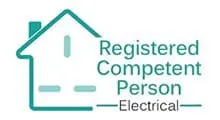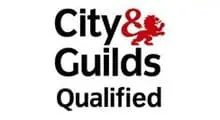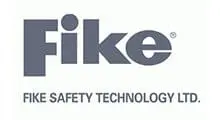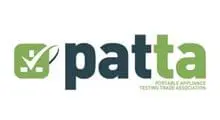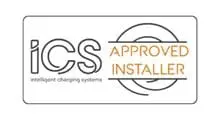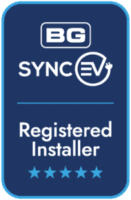PAT Testing now known as Electrical Equipment Testing (EET) or Portable Appliance Testing in Peterborough, Milton Keynes, Bedfordshire and Cambridgeshire
Keep Your Electrical Equipment Safe with Safe Electric's EET Testing Services
If you own or manage a property, it’s crucial to ensure that all electrical equipment is safe for use. Electrical equipment testing, also known as PAT Testing, is an essential process that ensures the safety of all portable appliances, electrical equipment, and systems. Safe Electric is a reputable and experienced electrical testing company that provides reliable and professional PAT (EET) Testing services in Cambridge, Peterborough, Milton Keynes, and the surrounding areas.
- Engineers local to you
- Fully certified & accredited
- Quality assured service
- Fast, free, no-obligation quote
PAT Testing, Portable Appliance Testing (EET) is an important process that ensures electrical appliances and equipment are safe to use.
At Safe Electric, our testers are fully trained to the City and Guilds (2377) standard in PAT testing and are also enhanced DBS checked, giving our clients peace of mind.
Our team of certified and qualified engineers has the knowledge and expertise to conduct a comprehensive range of electrical safety tests, including
- Visual inspections
- Earth continuity testing
- Insulation resistance testing
- Polarity checks
- Comprehensive testing and reporting
At Safe Electric, we understand that electrical safety is paramount. That’s why we offer a flexible and convenient service, tailored to meet the unique needs of each client.
We work around your schedule to ensure minimal disruption to your business or home life. Our team of experts will carry out the testing quickly and efficiently, and we’ll provide you with a detailed report of the results.
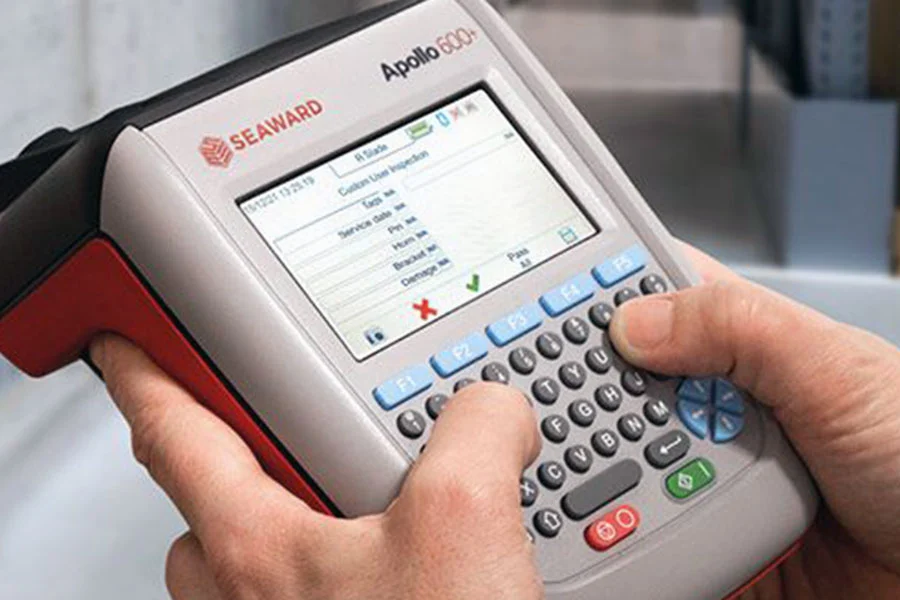
Our Accreditations
What is EET Testing?
PAT testing, also known as electrical equipment testing or EET testing, is a process used to assess the safety and functionality of electrical equipment. This process involves conducting a series of tests and inspections to determine whether the equipment is in good working order and complies with safety standards.
During PAT testing (EET), our certified engineers use specialised equipment to test various aspects of electrical equipment, including its insulation, grounding, polarity, and earth continuity. The testing process is designed to identify any potential hazards, such as electrical shocks or fires, and to ensure that the equipment is functioning properly.
PAT testing (EET) is essential for ensuring the safety of individuals who use electrical equipment, whether in a domestic, commercial, or industrial setting. By identifying potential hazards and ensuring that equipment is in good working order, PAT (EET) testing helps to prevent accidents and injuries caused by faulty or malfunctioning electrical equipment.
Our testers are trained to the City and Guilds (2377) standard in Portable Appliance Testing and are enhanced DBS checked. This gives our clients peace of mind.
Your Responsibility
The Electricity at Work Act (1989) places legal responsibility on employers, employees and self-employed persons to comply with the provisions of the regulations and take reasonably practicable steps to ensure that no danger results from the use of such equipment.
Therefore portable appliance testing (PAT) known as (EET) since 2019 is an important part of any Health & Safety Policy.
What will I receive in my EET Test?
Our quote to you includes:
- An inclusive rate regardless of whether it is for out of hours work, at night or the weekend
- All travel expenses
- Uniquely numbered easily identifiable labels on all appliances
- Replacement fuses where necessary.
- Certificate of Compliance and report issued and e-mailed to you as a pdf
- Timely reminders for re-tests at a frequency to suit you.
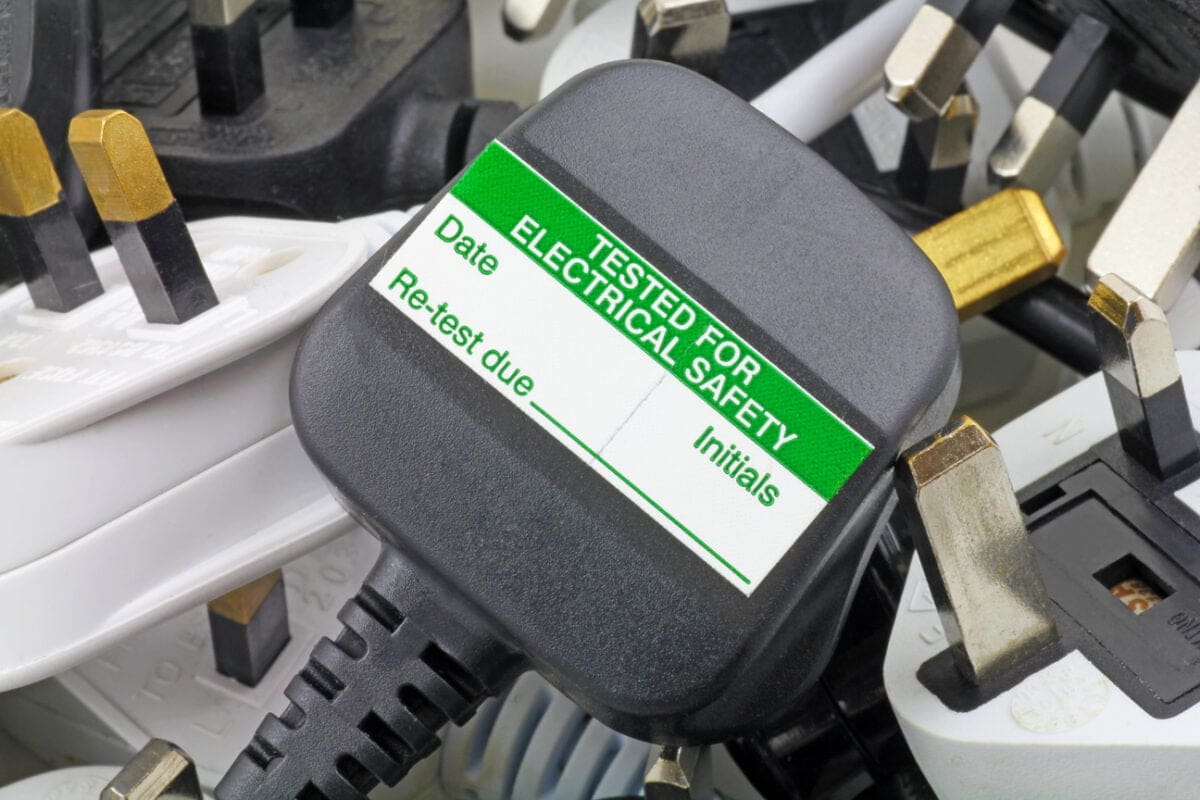
FAQ's
PAT testing which is a term most people know, has been changed to EET ( Electrical Equipment testing)
PAT Testing stands for Portable Appliance Testing (EET), and it is a process of inspecting and testing electrical appliances to ensure that they are safe for use. In the UK, PAT Testing (EET) is one way to discharge your requirements for businesses and organisations to comply with the Health and Safety at Work Act (1974) and the Electricity at Work Regulations (1989).
The main purpose of PAT Testing (EET) is to ensure that all electrical appliances used in the workplace are safe and do not pose a risk of electrocution or fire. This includes all portable electrical equipment, such as computers, printers, kettles, and power tools, as well as larger appliances that are hard-wired into the building’s electrical system.
PAT Testing (EET) involves a series of visual inspections, electrical tests, and functional checks that are carried out by a qualified electrician or a trained PAT Testing (EET) technician.
The testing process involves checking for any visible damage or wear and tear, testing for insulation resistance, earth continuity, and polarity, as well as carrying out functional checks to ensure that the appliance is operating correctly.
Businesses in the UK have a legal obligation to ensure the safety of their employees and visitors, and PAT Testing (EET) is an essential part of meeting this obligation.
By carrying out regular PAT Testing (EET), businesses can identify and address any potential electrical hazards before they become a problem, reducing the risk of accidents, injuries, and damage to property. Additionally, PAT Testing (EET) can help businesses comply with their insurance requirements, demonstrate their commitment to health and safety, and avoid costly legal penalties in an accident.
The purpose of PAT Testing (EET) is to ensure that electrical appliances are safe to use and do not pose a risk to the people who use them. The testing process involves inspecting and testing all portable electrical appliances and larger appliances that are hard-wired into the building’s electrical system.
PAT Testing (EET) helps to identify any faults or defects in electrical appliances that could lead to accidents, such as electrocution or fire. By carrying out regular PAT Testing (EET) , businesses can ensure that their appliances are well-maintained and safe for use. This not only protects employees and visitors from harm but also helps to prevent damage to property and equipment.
PAT Testing (EET) is also important for businesses to comply with health and safety regulations, such as the Health and Safety at Work Act (1974) and the Electricity at Work Regulations (1989). Compliance with these regulations is a legal requirement for businesses in the UK, and failure to comply can result in legal penalties and reputational damage.
Overall, the purpose of PAT Testing (EET) is to provide a safe and secure environment for employees and visitors, while also protecting the business from legal and financial risks associated with accidents caused by electrical appliances.
PAT Testing , Portable Appliance Testing Now called EET testing is a process of testing electrical appliances to ensure that they are safe to use. The following are examples of equipment that may require PAT testing (EET) :
- Computers, laptops, and other IT equipment
- Kettles, toasters, microwaves, and other kitchen appliances
- Vacuum cleaners, floor polishers, and other cleaning equipment
- Power tools, drills, and other workshop equipment
- Hairdryers, curling tongs, and other personal grooming appliances.
- Extension leads, chargers, and other electrical accessories.
It is important to note that the specific equipment that requires PAT testing (EET) may vary depending on the industry, workplace, and the level of risk associated with the equipment. It is best to consult with a qualified and experienced PAT testing (EET) provider to determine which equipment needs to be tested and how often.
How do you Determine the frequency of PAT Testing (EET) for different types of equipment?
The frequency of PAT Testing; Electrical Equipment Testing (EET) for different types of equipment can vary depending on several factors, including:
- The type of equipment: Different types of equipment may require different testing intervals based on the level of risk associated with their use.
- The environment in which the equipment is used: Equipment used in harsh or hazardous environments may require more frequent testing to ensure that they remain safe to use.
- The level of usage of the equipment: Equipment that is used frequently or for longer periods may require more frequent testing to ensure that they are not subject to wear and tear that could impact their safety.
- Manufacturer’s recommendations: The manufacturer of the equipment may provide guidelines on the recommended testing intervals based on the type of equipment and its expected usage.
- Previous test results: If a piece of equipment has failed a previous test, it may require more frequent testing until it can be verified as safe.
To determine the frequency of PAT testing (EET) for different types of equipment, it is best to consult with a qualified and experienced PAT testing (EET) provider.
They can assess the equipment, its usage, and the environment in which it is used to determine the appropriate testing intervals.
Additionally, they can advise on any additional measures that may be required to ensure the equipment remains safe to use, such as maintenance or repairs.
There are several benefits of EET Testing for businesses, including:
- Compliance with legal requirements:
EET Testing is a legal requirement for businesses in the UK under the Health and Safety at Work Act (1974) and the Electricity at Work Regulations (1989). By complying with these regulations, businesses can avoid legal penalties and reputational damage.
- Improved safety:
The primary purpose of EET Testing is to ensure that electrical appliances are safe to use and do not pose a risk of electrocution or fire. By carrying out regular EET Testing, businesses can identify and address potential hazards before they become a problem, thus improving the safety of their employees and visitors.
- Reduced risk of accidents:
EET Testing helps to identify any faults or defects in electrical appliances that could lead to accidents, such as electrocution or fire. By addressing these issues, businesses can reduce the risk of accidents in the workplace.
- Protection of property and equipment:
Electrical faults can cause damage to property and equipment. By identifying and addressing potential faults through EET Testing, businesses can avoid costly repairs or replacements.
- Cost-effective:
EET Testing is a cost-effective way to ensure the safety of electrical appliances. By identifying potential hazards before they become a problem, businesses can avoid costly repairs or replacements and reduce their insurance premiums.
- Demonstrates commitment to health and safety:
By carrying out regular EET Testing, businesses can demonstrate their commitment to health and safety, which can improve employee morale and enhance their reputation with customers and stakeholders.
Overall, EET Testing is an essential part of ensuring the safety of employees and visitors, protecting property and equipment, and complying with legal requirements. By investing in regular EET Testing, businesses can improve their safety record, reduce the risk of accidents, and protect their reputation and bottom line.
In the UK, EET Testing can be carried out by anyone who has the necessary skills and knowledge to do so. This includes qualified electricians, EET Testing specialists, or trained individuals within a business who have undergone EET Testing training.
However, in order to perform EET Testing competently, individuals should have a good understanding of electrical safety and the relevant legislation, as well as the skills and knowledge required to carry out the testing process effectively. This includes knowledge of the types of electrical appliances, how they work, and the different tests that are required for each appliance.
There is no specific qualification required to carry out EET Testing, according to the search engines, however, you must be trained properly most competent Engineers hold a C&G 2377 certificate in Compliance testing, but it is recommended that individuals undergo formal training to gain the necessary skills and knowledge. This training can be obtained from a variety of sources, including training courses provided by accredited training providers, or through online training programs, far too many people that say they are EET engineers have only done a ½ day or 1-day course and hold no formal qualifications and are not competent inspectors.
In addition, the Health and Safety Executive (HSE) recommends that EET Testers are able to demonstrate their competence through practical assessments or certification from a recognised body, such as the Institution of Engineering and Technology (IET) or the City and Guilds.
It is important to note that while EET Testing can be carried out by anyone with the necessary skills and knowledge, businesses should ensure that the individual or company they choose to carry out EET Testing is reputable and competent and can provide evidence of their qualifications and experience.
The frequency of EET Testing depends on several factors, including the type of appliance, its usage, and the environment in which it is used. The Health and Safety Executive (HSE) provides guidance on the recommended frequency of EET Testing, which is as follows:
- Class I appliances, such as kettles and toasters, in offices, shops, and hotels should be tested every 2-4 years.
- Class II appliances, such as hair dryers and audio equipment, in offices, shops, and hotels should be tested every 2-4 years.
- Moveable equipment, such as power tools and extension leads, should be tested every 1-2 years.
- Portable equipment used for construction, demolition, and similar sites should be tested every 3 months.
However, it is important to note that these are general guidelines, and the testing frequency may need to be increased or decreased depending on the specific circumstances of each appliance. Factors that can affect the testing frequency include:
- The type of appliance:
Different types of appliances have different testing requirements. For example, appliances that are used in harsh environments or exposed to extreme temperatures may require more frequent testing.
- The usage of the appliance:
Appliances that are used frequently or intensively may require more frequent testing than those that are used infrequently.
- The age of the appliance:
Older appliances may be more prone to faults and failures and may require more frequent testing.
- The results of previous testing:
If an appliance has previously failed a EET test, it may need to be tested more frequently to ensure that it is safe to use.
- Changes to the environment:
If there are any changes to the environment in which the appliance is used, such as changes in temperature or humidity, this may affect the testing frequency.
Overall, businesses need to carry out a full risk assessment and identify specific risks associated with each appliance and carry out EET Testing at the recommended frequency or more frequently if necessary. Regular testing can help to identify any potential issues before they become a safety hazard, helping to protect employees and customers from electrical hazards.
We can assist you with producing a fully compliant risk assessment there is a lot involved with this and a lot of questions that need to be considered, which is why good companies will ask for your risk assessment before even taking on the work and if they identify any failings they should advise you of this, however, don’t do what many companies try to do which is get them to vet your risk assessment for nothing time is money and some of these assessments can be 10 pages to hundreds of pages long they will not act as free consultants for you.
Totally Subject To Your Risk Assessment
Although it is required that testing be carried out “regularly,” there are no established criteria or guidelines defining what constitutes “regular” or defining how frequently EET testing should be undertaken.
This is because diverse surroundings and different kinds of equipment each call for a distinct strategy, which is why this is the case.
EET testing should, at the absolute least, be carried out on a cycle of every two years, as recommended by the general rule of thumb. However, this is only a general suggestion, and there are a few things that need to be taken into consideration in order to decide the testing frequency that is appropriate for your situation.
The following is a description of the many kinds of locations that require EET testing, along with an explanation of when they will require it.
Commercial Environments
Offices, shops, hotels etc.
- Testing of Class 1 equipment, often known as ordinary IT equipment, is recommended once every four years.
- Every two years, portable devices like extension cords should be inspected.
- Due to the greater risk of damage, equipment that is portable or often used and moved should be inspected once a year.
Schools
- Every year, all class 1 and IT equipment should be checked.
- Every two years, class 2 equipment needs to be tested.
Construction
- A building site should test any standard 110V equipment as frequently as every three months!
Industrial
- Equipment for industrial settings, particularly commercial kitchens, should undergo testing as frequently as every six months.
- It is advised to evaluate other fixed, mobile, or IT devices every 12 months.
Maintaining a comprehensive inventory of all equipment that requires Portable Appliance Testing (EET) is essential for businesses in ensuring the safety of their employees and complying with regulatory requirements. Here are some reasons why having a comprehensive EET testing inventory is important:
- Ensures all equipment is tested: A comprehensive inventory ensures that all equipment that requires EET testing is identified and scheduled for testing. This reduces the risk of any equipment being missed, which could potentially pose a safety risk to employees.
- Helps to manage testing schedules: A EET testing inventory helps to manage testing schedules by identifying when each piece of equipment was last tested, and when it is due for its next test. This helps businesses to ensure that testing is completed within the recommended time frames, reducing the risk of any equipment becoming unsafe for use.
- Reduces costs: By having a comprehensive inventory, businesses can optimize their EET testing schedule, reducing the likelihood of over-testing or under-testing equipment. This can lead to cost savings as unnecessary testing is avoided, and the risk of equipment failure is minimized.
- Simplifies compliance: Many regulatory bodies require businesses to maintain records of EET testing to demonstrate that they are compliant with safety regulations. A comprehensive inventory simplifies the process of maintaining these records, ensuring that businesses have all the necessary documentation to demonstrate their compliance.
- Enhances risk management: A comprehensive inventory allows businesses to identify areas of risk related to their equipment, such as equipment that is used in hazardous environments or equipment that has a history of faults. This information can be used to prioritize testing and maintenance schedules, ensuring that the most critical equipment is tested and maintained first.
Overall, maintaining a comprehensive EET testing inventory is essential for businesses in ensuring the safety of their employees, complying with regulations, and reducing costs. It is best to consult with a qualified and experienced EET testing provider to help establish a comprehensive inventory that meets the unique needs of your business.
How can this be so you ask yourself, so do many competent Electrical Equipment Testers!?
In the UK, there is no legal requirement for specific qualifications or certifications to carry out Portable Appliance Testing (EET Testing). However, the Health and Safety Executive (HSE) recommends that EET testers have the necessary knowledge and skills to carry out the testing effectively and safely.
To ensure competence, individuals who carry out EET Testing should have a good understanding of electrical safety and the relevant legislation, as well as the skills and knowledge required to carry out the testing process effectively. There are several ways that individuals can acquire the necessary knowledge and skills, including:
- Formal training courses: Many training providers offer EET Testing courses, which cover the theoretical and practical aspects of EET Testing, including electrical safety, testing procedures, and interpreting results. There are various training courses available, ranging from basic courses for beginners to more advanced courses for experienced testers.
- Online training courses: There are many online courses available that cover the theory of EET Testing and provide training on how to carry out testing. These courses can be completed at the individual’s own pace and are often more cost-effective than attending a face-to-face training course.
- Qualifications and certifications: While there is no legal requirement for EET Testing qualifications or certifications, there are several recognised certifications that demonstrate competence in EET Testing. These include certifications from organisations such as the Institution of Engineering and Technology (IET), City and Guilds, and the Electrical Contractors Association (ECA).
It is important to note that businesses should ensure that the individual or company they choose to carry out EET Testing is reputable and competent and can provide evidence of their qualifications and experience.
The electrical output of a device and whether or not the user has been adequately shielded from shocks by an earthing wire or insulation are the two primary factors in determining the class ranking system used to classify electrical appliances.
There are two types of appliances that should never be used, and those fall into the first two categories.
Class ‘0’
Class 0 items only have one layer of insulation, which indicates that a single malfunction has a high probability of resulting in an electric shock to the user or, at the absolute least, a spark that may quickly spread into a fire. Since 1975, the United Kingdom has prohibited the sale of such items, which were originally developed for use in extremely dry climates. Christmas tree lights were commonly a Class 0 product prior to the prohibition on such items.
Class ‘01’
The only difference from 0 is that its power cable lacks an earthing connection. There is no earthing contact within the plug. Class 01 items are often high-tech, specialised tools that not everyone needs.
Class 1
All of the plugs and sockets for the items in this category include an earth wire and a built-in earth circuit. If the primary insulation fails, metal components of the items may generate a dangerous voltage. Basically, this implies that the protective conductor must be connected to any metal components of the items. Overcurrent protection, in the form of a fuse or circuit breaker, should be activated in the event of an appliance malfunction. All electrical items, including those used in the kitchen, must undergo PAT testing.
These include – Kettles, Irons, Washing Machines, Toasters, Microwaves, Electric Heaters, Fridges, Freezers and Tumble Dryers.
Class 2
There will be no ground wire in the plug and no earth circuit in these items. Double insulated describes a product that meets the standards to be classified as Class 2. The goal here is to further protect against electrical shock. Good examples of items that should undergo PAT testing are:
Hair straighteners, electric hedge trimmers, video recorders, flat-screen televisions, and table lamps.
Class 3
Class 3 devices are those that run on SELV (Separated Extra Low Voltage). What this implies is that the gadget can’t generate enough voltage to cause a shock if used improperly. These products typically have a voltage output of either 50vac or 120vdc. Class 3 items do not need to be PAT tested, but their charging leads, for instance, may be a class 2 product and so require testing. Except when used in a medical setting, the following equipment belong in Class 3, meaning they lack adequate protection.
These include:- Smartphones, notebook computers, and energy-efficient light bulbs.
Totally Subject To Your Risk Assessment
Regular user visual inspections and formally conducted visual inspections by a “competent” person work well together to reduce the risks and failure of electrical appliances.
As a result, in addition to equipment testing, safety programmes should also involve visual inspections. Both the frequency of visual inspections and the frequency of electrical testing should be checked on a regular basis.
Every employee on staff is capable of conducting user inspections. These ought to be non-technical, visually guided, and unobtrusive. Operators wouldn’t be asked to utilise testing equipment or open the casings.
These inspections wouldn’t need to be recorded, but in the event that a problem is found, there should be a clear procedure in place for workers to inform the appropriate person in the organisation of the issue that needs to be fixed.
Operatives might benefit from training if they want to know what to look for when using equipment in general and how to report defects.
The main differences between in-house and outsourced EET Testing are:
- Cost:
In-house EET Testing can be more cost-effective than outsourcing, as it eliminates the need to pay for external services. However, this assumes that the individual or team responsible for in-house EET Testing has the necessary skills, knowledge, and equipment to carry out the testing effectively.
- Expertise:
Outsourced EET Testing can provide access to specialised knowledge and expertise that may not be available in-house. Outsourced providers are often trained and certified in EET Testing and have experience in testing a wide range of appliances, which can result in more comprehensive testing and potentially identify issues that may have been overlooked by in-house testing.
- Time and efficiency:
Outsourced EET Testing can be more efficient and time-saving compared to in-house testing, particularly if the business has a large number of appliances to test. Outsourced providers can test appliances quickly and efficiently, reducing downtime and minimizing disruption to business operations.
- Liability:
Outsourced EET Testing can provide an additional level of protection for businesses, as external providers are often insured against any damage that may occur during the testing process. This can reduce the potential liability for businesses in the event of an accident.
- Control:
In-house EET Testing provides businesses with greater control over the testing process, allowing them to schedule testing at their convenience and ensuring that the testing is carried out according to their specific requirements. Outsourced providers may have less flexibility in scheduling testing, and may not be able to tailor the testing to the specific needs of the business.
Overall, the choice between in-house and outsourced EET Testing will depend on the specific needs and circumstances of each business. In-house testing may be more suitable for small businesses with a small number of appliances to test, while outsourced testing may be more suitable for larger businesses with a large number of appliances or those who require specialist knowledge and expertise.
The level of inspection and testing required is dependent upon the risk of the appliance becoming faulty, the type of appliance, the nature of its use and the environment in which it is used. The Institution of Engineering and Technology (IET) Code of Practice for In-Service Inspection and Testing of Electrical Equipment provides the basis for our recommendation.
All customers now have a duty of care under the regulations to provide us with a full risk assessment of your equipment prior to us attending site, this is the bases that we use to form, the testing criteria. If you are unable to do this we can assist you.
As part of our quality assurance, we invite our clients to complete a customer comment form and we are so confident of our service that we would be glad to share this feedback with you.
To prepare for Electrical Equipment Testing (EET), businesses should take the following steps:
- Create an inventory of all electrical equipment: A comprehensive inventory of all electrical equipment, including make, model, and location, will help the EET provider to plan and schedule the testing process.
- Identify the testing requirements for each piece of equipment: Different types of equipment may require different tests, and testing intervals may vary based on usage and environment. Businesses should work with their EET provider to identify the appropriate testing requirements for each piece of equipment.
- Schedule testing at a convenient time: EET testing can disrupt business operations, so it’s important to schedule testing at a time that is least disruptive to the business.
- Notify employees: Inform employees of the testing schedule, and ensure they know which equipment will be tested, and what areas will be affected.
- Provide access to equipment: EET providers will need access to all equipment to be tested. Businesses should ensure that equipment is readily accessible and that any locked areas are opened for the testing period.
- Prepare for the testing process: EET providers will need access to power sockets and other equipment necessary to perform the testing. Businesses should ensure that testing areas are cleared of obstacles and that there is sufficient lighting for the testing process.
During the EET testing process, the EET provider will perform a range of tests, including visual inspections, earth continuity tests, insulation resistance tests, and functional tests. The EET provider will mark each item of equipment with a pass or fail label, and provide a report detailing the results of the testing. If any equipment fails the testing process, the EET provider will provide advice on what remedial actions are required to make the equipment safe for use.
Overall, EET testing is an essential part of maintaining a safe and compliant workplace. By working with a qualified and experienced EET provider, businesses can ensure that their equipment is tested efficiently, effectively, and with minimum disruption to their operations.
During an Electrical Equipment Testing (EET) visit, you can expect the EET provider to:
- Arrive at the agreed time: The EET provider will arrive at the scheduled time and will usually provide advance notice of their arrival.
- Perform a visual inspection: The EET provider will visually inspect all electrical equipment to check for any obvious signs of damage or wear.
- Perform testing: The EET provider will perform a range of tests, including earth continuity tests, insulation resistance tests, and functional tests, to ensure that the equipment is safe and compliant.
- Label equipment: Equipment that passes the testing process will be labelled with a pass label, while equipment that fails will be labelled with a fail label.
- Provide a testing report: The EET provider will provide a detailed report outlining the results of the testing and any remedial actions required to make any failed equipment safe.
- Answer any questions: The EET provider will be available to answer any questions you may have about the testing process or the results of the testing.
It’s important to note that EET testing may cause some disruption to your business operations, especially if you have a large number of electrical items that require testing. However, by working with an experienced EET provider, you can ensure that the testing process is completed as efficiently and effectively as possible. Additionally, EET testing is an important part of maintaining a safe and compliant workplace and can help to prevent electrical accidents and ensure the ongoing reliability of your equipment.
There are several different types of EET Testing, each with a different level of inspection and testing.
- Formal visual inspection:
This is a basic inspection of the equipment to check for any visible signs of damage, such as frayed cords, cracks in the casing, or loose connections.
- EET Testing with a portable appliance tester:
This involves using a EET testing machine to perform a series of tests on the appliance, including earth continuity, insulation resistance, and polarity checks.
- EET Testing with a fixed appliance tester:
This is used to test appliances that are hardwired into the electrical system, such as ovens or air conditioning units. It involves testing the wiring and connections to ensure that they are safe, these are by their very nature time-consuming and often require tracing of the actual circuit they are connected to and also the shutting down of that circuit, this requires that the person carrying out this type of inspection is a qualified electrician as well as a qualified EET (Formally EET) inspector
- Combined inspection and testing:
This involves a more comprehensive inspection and testing process, which includes both a visual inspection and EET Testing with a portable appliance tester.
The exact testing process may vary depending on the type of equipment being tested and the testing requirements. However, in general, EET Testing involves a visual inspection of the equipment, followed by a series of electrical tests using a EET testing machine. The results of the testing are then recorded, and a report is produced detailing the equipment that has been tested, the results of the tests, and any recommendations or remedial actions that are required.
Advantages and disadvantages of the different types of EET Testing
- Formal visual inspection:
Advantages:
- Quick and easy to perform.
- Can be performed by anyone who has been trained to identify potential hazards and damage.
Disadvantages:
- Limited in scope and may miss faults that cannot be detected visually.
- Not suitable for all types of equipment.
- EET Testing with a portable appliance tester:
Advantages:
- Comprehensive testing that can detect a range of electrical faults.
- Can be performed quickly and efficiently.
- Can be used on most types of equipment.
Disadvantages:
- Requires specialized equipment and training.
- May not be suitable for certain types of equipment, such as large or complex machinery.
- May be more expensive than other forms of testing.
- EET Testing with a fixed appliance tester:
Advantages:
- Suitable for testing equipment that is hardwired into the electrical system.
- Can detect faults that may not be identified by other forms of testing.
Disadvantages:
- Requires specialized equipment and training.
- May be more time-consuming than other forms of testing.
- May be more expensive than other forms of testing.
- Combined inspection and testing:
Advantages:
- Comprehensive testing that includes both visual inspection and electrical testing.
- Can be used on most types of equipment.
Disadvantages:
- May be more time-consuming than other forms of testing.
- May be more expensive than other forms of testing.
Overall, the choice of EET Testing method will depend on the type of equipment being tested, the testing requirements, and any regulatory requirements.
Here are some general recommendations for the testing frequency of different types of equipment:
- Stationary equipment, such as photocopiers and vending machines, should be tested every 2-4 years.
- IT equipment, such as computers and printers, should be tested every 2-4 years.
- Extension leads and portable RCDs should be tested every 1-2 years.
- Handheld equipment, such as drills and hairdryers, should be tested every year.
- Appliances used in harsh environments, such as construction sites, should be tested every 3 months.
- Appliances used in public areas, such as kettles in hotels and cafes, should be tested every year.
It is important to note that these are general guidelines, and the specific testing frequency may need to be adjusted depending on factors such as the type of equipment, its usage, and the environment in which it is used. Additionally, businesses should follow any specific testing requirements set out by their industry or regulatory bodies.
The frequency of EET Testing can vary depending on several factors, including:
- The type of equipment: Different types of equipment have different testing requirements. For example, IT equipment and stationary equipment may require less frequent testing than portable equipment or handheld tools.
- The usage of the equipment: The frequency of testing can also depend on how often the equipment is used. Equipment that is used frequently or for long periods may require more frequent testing.
- The environment in which the equipment is used: Equipment that is used in harsh environments or exposed to extreme temperatures, humidity, or dust may require more frequent testing.
- The age and condition of the equipment: Older equipment or equipment that has previously failed a EET test may require more frequent testing to ensure its safety.
- Any changes to the equipment or environment: If there are any changes to the equipment or the environment in which it is used, this may affect the testing frequency.
- Legal requirements and industry standards: Some industries or regulatory bodies may have specific requirements for the frequency of EET Testing that must be followed.
Overall, the frequency of EET Testing should be determined based on a risk assessment of the equipment and its usage, as well as any regulatory requirements. Regular testing can help to identify any potential issues before they become a safety hazard, helping to protect employees and customers from electrical hazards.
During Electrical Equipment Testing (EET), some common issues that can be encountered include:
- Inaccessible equipment:
If equipment is not accessible or cannot be located for testing, it cannot be tested. To resolve this issue, ensure that all equipment is easily accessible and can be located on the day of the testing.
- Failed equipment:
If equipment fails the testing process, it may need to be repaired or replaced. Address any failed equipment promptly to ensure that it is safe and compliant.
- Unlabelled equipment:
If equipment is not labelled, it cannot be tracked or identified during subsequent testing. To avoid this issue, ensure that all equipment is labelled before the testing process begins.
- Miscommunication:
Miscommunication between the business and the EET provider can lead to confusion or delays during the testing process. To avoid this issue, ensure that all parties involved have a clear understanding of the testing process and any requirements or expectations.
- Outdated equipment:
Outdated equipment may not meet current safety standards or may be difficult to test. To resolve this issue, consider replacing outdated equipment with newer, safer models.
To address these issues and ensure a smooth EET testing process, it’s important to work with an experienced and reputable EET provider who can identify and address any issues as they arise. Additionally, by maintaining an accurate inventory of all equipment, labelling equipment appropriately, and addressing any failed equipment promptly, businesses can help to minimise issues during the testing process and ensure that all equipment is safe and compliant.
Failing to adhere to EET Testing schedules can have serious consequences for businesses, including:
- Increased risk of electrical accidents:
Appliances that are not regularly tested can develop faults or wear and tear that may not be visible to the naked eye. This can increase the risk of electrical accidents such as fires, electric shocks, and even fatalities.
- Breach of legal requirements:
In the UK, businesses have a legal duty to ensure the safety of their employees and customers, including the safety of electrical equipment. Failure to comply with legal requirements for EET Testing can result in fines, legal action, and damage to the business’s reputation.
- Increased insurance premiums:
Insurance companies may require businesses to adhere to EET Testing schedules to ensure that their equipment is safe and reduce the risk of accidents. Failing to comply with these requirements can result in increased insurance premiums or even the loss of insurance coverage, and fires.
- Loss of business:
Failing to adhere to EET Testing schedules can damage a business’s reputation, leading to a loss of customers and revenue.
Overall, adhering to EET Testing schedules is essential for maintaining the safety of electrical equipment and ensuring compliance with legal requirements. Regular testing can help to identify any potential issues before they become a safety hazard, helping to protect employees, customers, and the business itself from the consequences of electrical accidents.
To make EET (Electrical Equipment Testing) more cost-effective, businesses can consider the following strategies:
- Prioritise equipment:
Prioritising equipment that is critical to business operations can help to ensure that testing is focused on the most important items, minimising the overall cost and disruption of testing.
- Conduct regular maintenance:
Regular maintenance of equipment can help to identify issues before they become major problems, reducing the need for costly repairs or replacements.
- Group equipment by location:
Grouping equipment by location can help to minimize the need for multiple testing visits, reducing overall testing costs.
- Schedule testing during off-hours:
Scheduling testing during off-hours can help to minimize disruptions to business operations, reducing the cost of lost productivity.
- Work with a reputable EET provider:
Choosing a reputable EET provider with experience in your industry and a track record of providing high-quality testing services can help to ensure that testing is conducted efficiently and effectively.
- Invest in employee training:
Investing in training for employees can help to ensure that equipment is properly maintained, reducing the need for additional testing or repairs.
- Keep accurate records:
Keeping accurate records of equipment testing can help to ensure that equipment is tested on schedule and that there are no missed items, reducing the need for additional testing visits.
By taking a proactive approach to EET testing and implementing these strategies, businesses can reduce the overall cost of testing while ensuring that their equipment is safe and compliant with relevant regulations.
Choosing the right EET Testing provider can be a crucial decision for businesses. Here are some key factors to consider when selecting a provider:
- Qualifications and experience:
Look for a provider that has the necessary qualifications and experience to carry out EET Testing effectively and safely. Check that they have relevant certifications, such as those from the Institution of Engineering and Technology (IET) or City and Guilds, and that they have experience testing a wide range of appliances.
- Reputation:
Look for a provider with a good reputation in the industry. Check online reviews and ask for references from other businesses they have worked with. A reputable provider will be happy to provide references and evidence of their work.
- Cost:
Compare quotes from different providers to ensure that you are getting a fair price for the services provided. However, do not base your decision solely on cost, as cheaper providers will not provide the same level of quality as more expensive providers.
- Services offered:
Check that the provider offers a comprehensive range of EET Testing services, including testing of all types of appliances, visual inspections, and full electrical safety tests.
- Insurance:
Make sure that the provider has adequate insurance in place to cover any damage or accidents that may occur during the testing process.
- Customer service:
Choose a provider that offers good customer service, with clear communication and a quick response time to any queries or concerns.
Overall, choosing the right EET Testing provider requires careful consideration and research. By choosing a reputable, qualified, and experienced provider, businesses can ensure that their appliances are tested safely and effectively, helping to protect their employees and customers from electrical hazards.



